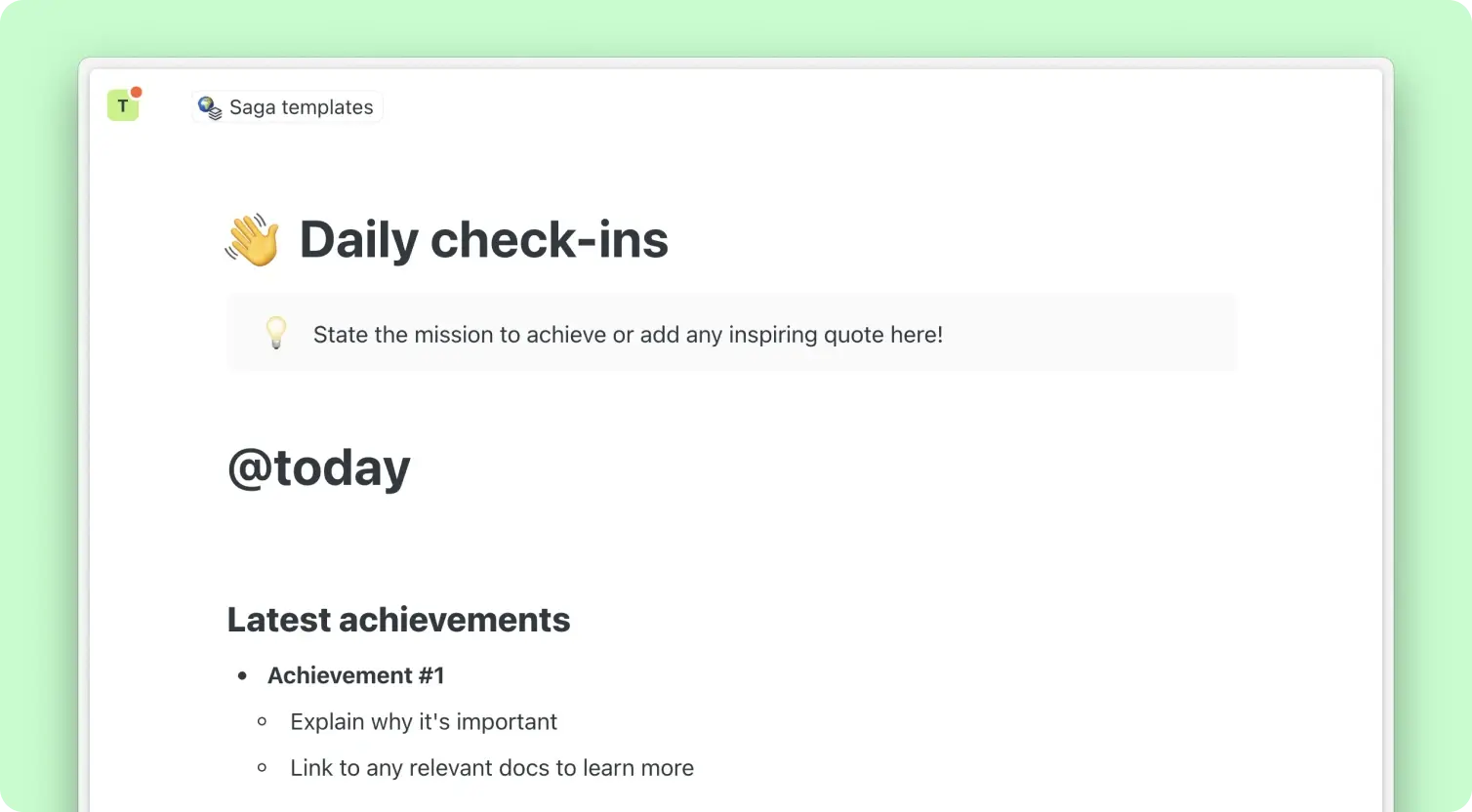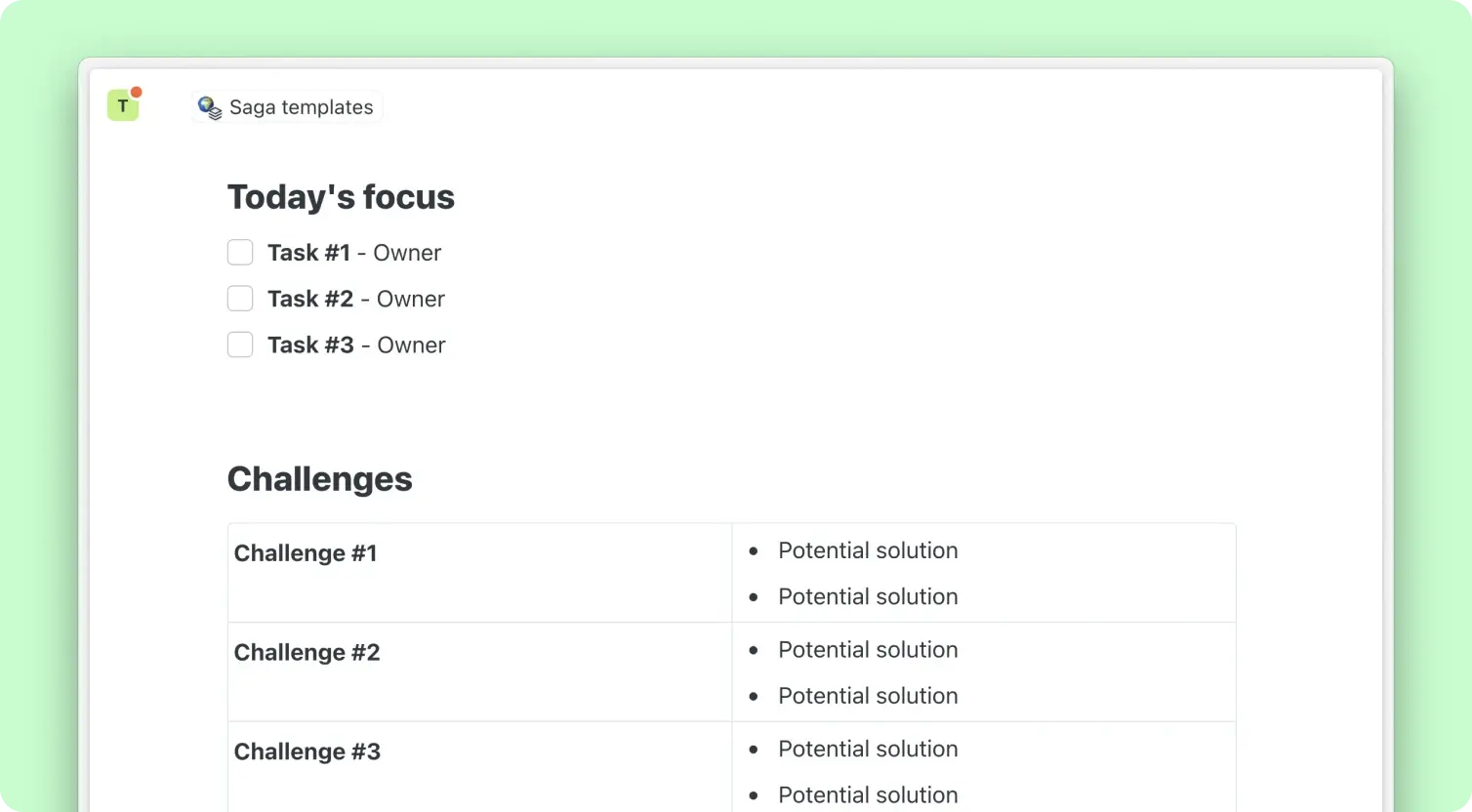Daily Check-in
Utilize our comprehensive guide to create, manage, and maintain your daily check-ins efficiently, ensuring clarity and consistency across your team communication workflows.

What is a daily check-in?
A daily check-in is a brief meeting or communication where team members share updates on their tasks, progress, and any challenges they are facing. It serves as a quick touchpoint to ensure everyone is aligned and aware of each other’s activities.
Effective daily check-ins are crucial for team cohesion, productivity, and transparency. They help ensure that everyone involved in the project development process understands the current status and expectations. They serve as a reference point for decision-making, resource allocation, and timeline adjustments.
Creating and maintaining comprehensive daily check-ins helps preserve knowledge about the project, making it easier to update, scale, and maintain over time.
Benefits of daily check-ins
Adopting thorough daily check-in practices offers numerous benefits, including enhanced clarity and communication. Clear check-ins help bridge the gap between different team members, ensuring everyone understands the project’s status and expectations.
Daily check-ins also promote consistency and standardization. By having a regular touchpoint, teams can ensure that all members are on the same page, reducing the risk of errors and miscommunication.
Furthermore, well-maintained check-ins facilitate easier onboarding and training. New team members can quickly get up to speed with the project’s status, reducing the learning curve and increasing productivity.
Lastly, comprehensive check-ins aid in troubleshooting and project improvement. They provide a detailed reference that can help in identifying inefficiencies and implementing improvements more efficiently.
How to create an effective daily check-in?
Creating effective daily check-ins involves several key steps:
- Identify the audience for your check-ins and understand their needs.
- Structure your check-ins logically. Use clear headings, subheadings, and sections to organize the information.
- Include detailed explanations, diagrams, and examples to illustrate key points.
- Engage your team in the check-in process to ensure accuracy and completeness.
- Review and update the check-ins regularly to reflect any changes in the project.
- Make your check-ins easily accessible. Use tools and platforms that allow for easy navigation, searchability, and collaboration.

Best Practices for Daily Check-ins
To maximize the effectiveness of your daily check-ins, consider these practical strategies:
- Set a consistent time for check-ins. This creates a routine that everyone can rely on.
- Keep meetings brief—15 to 30 minutes is ideal. This helps maintain focus and engagement.
- Encourage participation from all team members. Everyone should have the opportunity to share updates and challenges.
- Utilize visual aids like charts or dashboards to quickly convey project status and enhance understanding.
- Follow up on action items from previous check-ins to ensure accountability and progress.
- Solicit feedback regularly to refine the check-in process and address any concerns.
By implementing these best practices, you can create a more effective daily check-in process that strengthens communication and team collaboration.
Free template for daily check-ins
To assist you in creating and maintaining your daily check-ins, access our free template. It’s structured to guide you through documenting your team’s updates, challenges, and future plans, making it easier for you and your team to ensure clarity and consistency across your team communication workflows.
Get started
Then click on "Copy Page" to duplicate it in your workspace.


